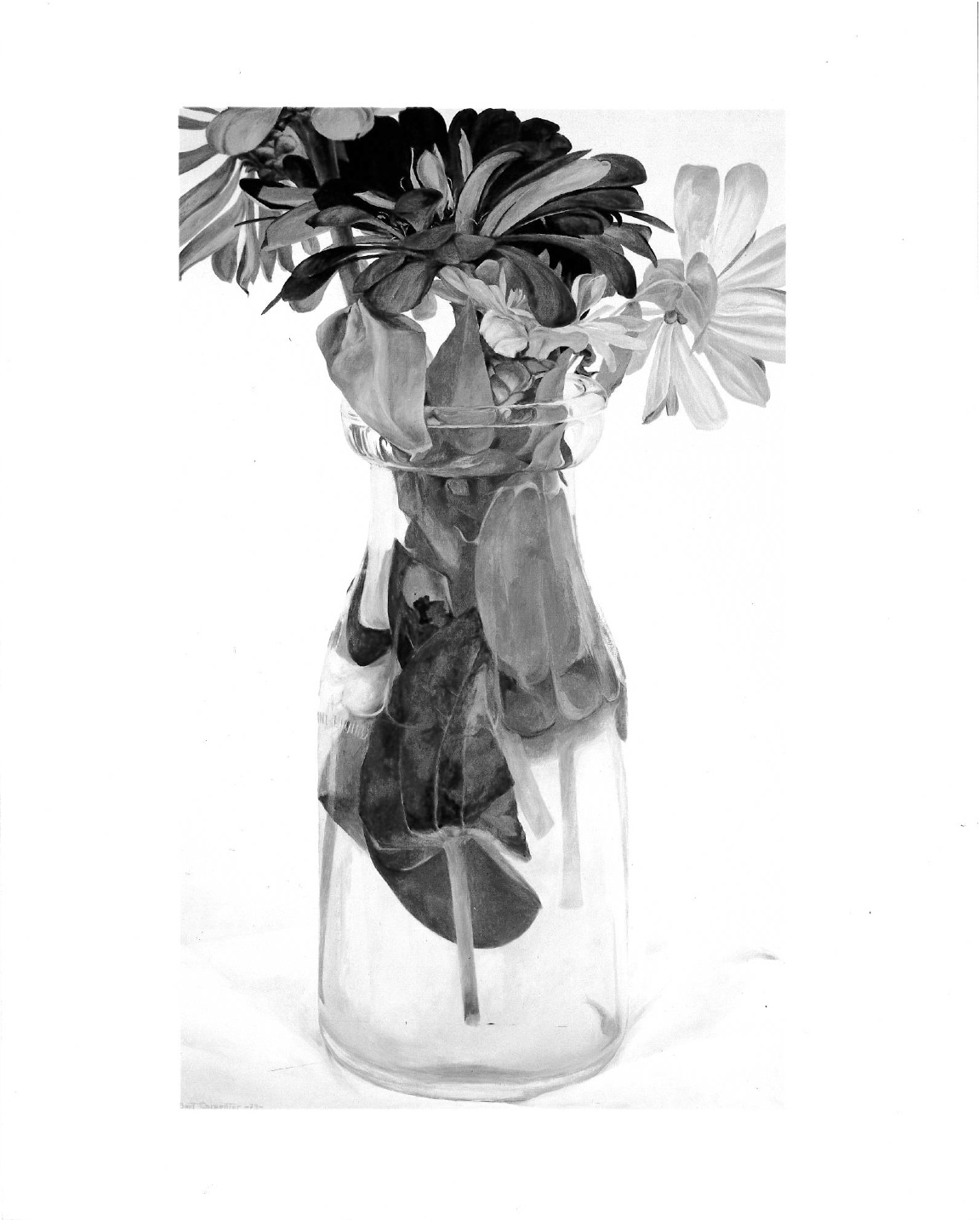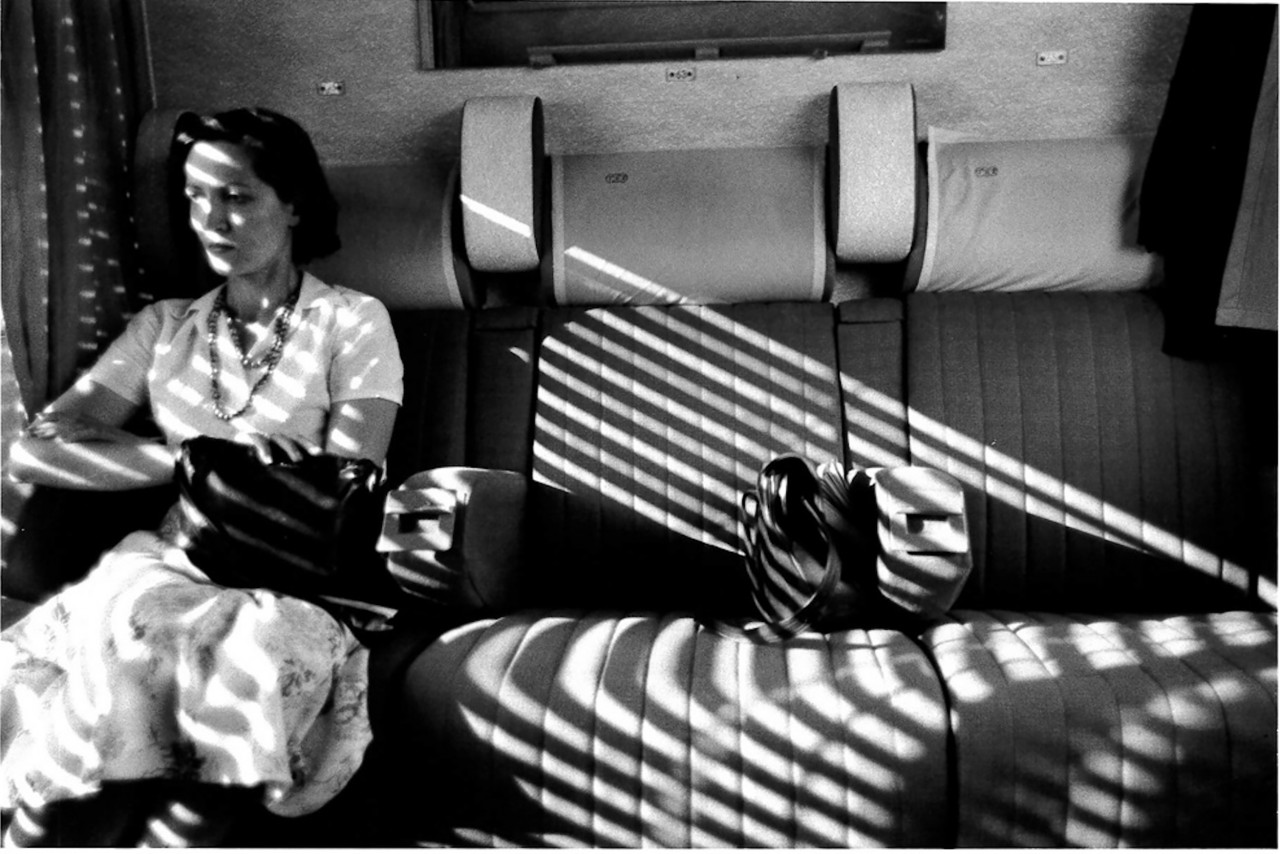March 9 – April 6, 1985
Artists Space
Three Exhibitions Sponsored by the Mark Rothko Foundation
Three projects in the spring of 1985 constituted the second annual series of exhibitions sponsored by the Mark Rothko Foundation. The series hoped to locate and expose artists working outside of the mainstream, at a later stage in their careers, working “outside of current trends, yet in innovative styles.”
A retrospective of Bert Carpenter’s work provided examples of his practice of still life painting: pictures of flowers and studio paraphernalia that congeal as erotic tableaus. The paintings’ emotional content is remote; their facture is smooth (one New York Times critic likened Carpenter’s touch to that of the earlier Pop painter, James Rosenquist), and in the accompanying statement, Carpenter refers to the structural role of the table or desk as a “stage” within the paintings, a device which distances their narrative content even further.
Charles Habutt got his start in photography while working as an associate editor for Jubilee magazine when asked to document Fidel Castro’s revolutionary government in Cuba in 1956, eventually photographing for the journals Revolución and Bohemia Libre. As his work became more politically driven, Habutt developed a conception of photography’s relationship to truth and politics that was grounded in the physical - “the lens’ chisel mark.”
Duane Zaloudek’s unusual display strategy required viewers to sit at a desk to examine his watercolors – pictures made by such austere means they at first appeared literally invisible. This device shifts the mode of spectatorship from mere “viewing” to “studying,” where the experience lies not in the simultaneous perception of all facets of the image but in the durational process of perception itself, as forms and spaces reveal themselves gradually to the attentive viewer.
From 1954 until 1960, Bert Carpenter taught at Columbia University and Hunter College of the City of New York. He then transferred to the University of Hawaii, where he taught for four years. He has been teaching at the University of North Carolina at Greensboro since 1964 and is currently Director of the Weatherspoon Art Gallery. His work has been shown throughout the United States, most recently in solo exhibitions at the Joy Tash Gallery, Scottsdale, Arizona (1982, 83), the A.M. Sachs Gallery, New York (1979, 81), and in group exhibitions at the Root Art Center, Hamilton College, Hamilton, New York (1981) and the Albright-Knox Museum, Buffalo, New York (1979). Born in Billings, Montana in 1921, Bert Carpenter currently lives in Greensboro, North Carolina.
Charles Harbutt's work has appeared in portfolio form in Modern Photography, Photo, Camera, Popular Photography Annual and Contemporary Photographer. Most recent exhibitions include solo shows at Salford '80, England (1980) and Galerie Fiolet, Amsterdam, Holland (1977), with group shows at the Bibliotheque Nationale, Paris, France (1984), Addison Gallery of American Art, Andover, Massachusetts (1984), Palais de Luxembourg, Paris (1981) and the Museum of Modern Art (1978). He has taught photography at the Art Institute of Chicago, Cooper Union, MIT, and the Rhode Island School of Design. His monograph, Travelog, which was published by the MIT Press in 1974, won the Arles Award for best photographic book that same year.
Duane Zaloudek had his first group exhibition in 1949. Since that time he has shown at galleries and museums across the United States, with most recent one-man exhibitions at White Columns (1980) and 55 Mercer Street Gallery (1978). Group exhibitions include those at the Max Hutchinson Gallery (1979), the Portland Art Museum (1977) and the Akron Art Institute (1976). Mr. Zaloudek, born in 1931 in Enid, Oklahoma, and now lives and works in New York City.



Artists Space activities are made possible by the National Endowment for the Arts, a Federal agency; the New York State Council on the Arts; Edward R. Broida Trust, Jerome Foundation, Leonhardt Foundation, Betty Parsons Foundation, Mark Rothko Foundation and Samuel Rubin Foundation; AT&T Communications, Chase Manhattan Bank, Citibank, Consolidated Edison, EXXON, Mobil Foundation, Morgan Guaranty Trust Company, Paine Webber, Philip Morris and Shearson Lehman/American Express, as well as numerous Friends.

